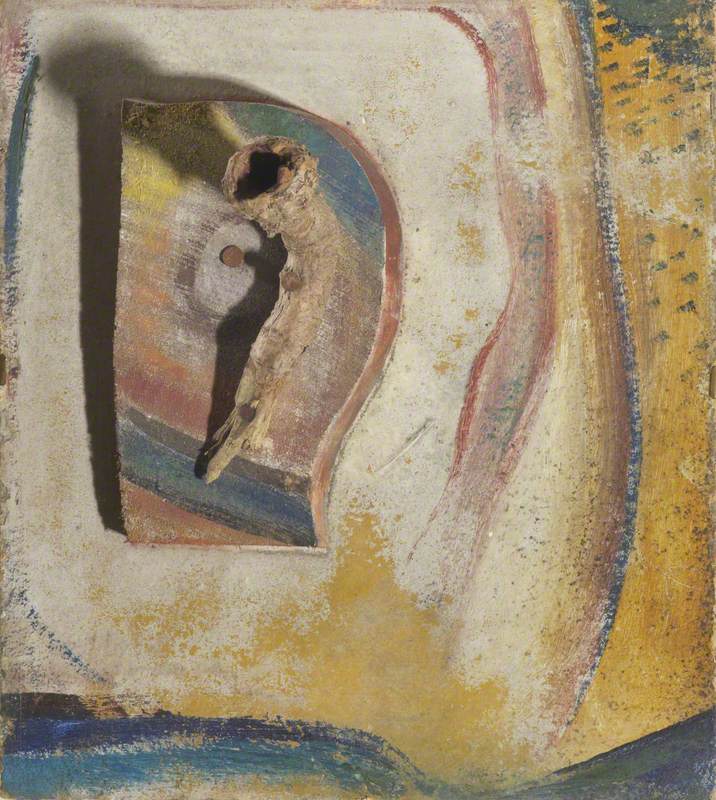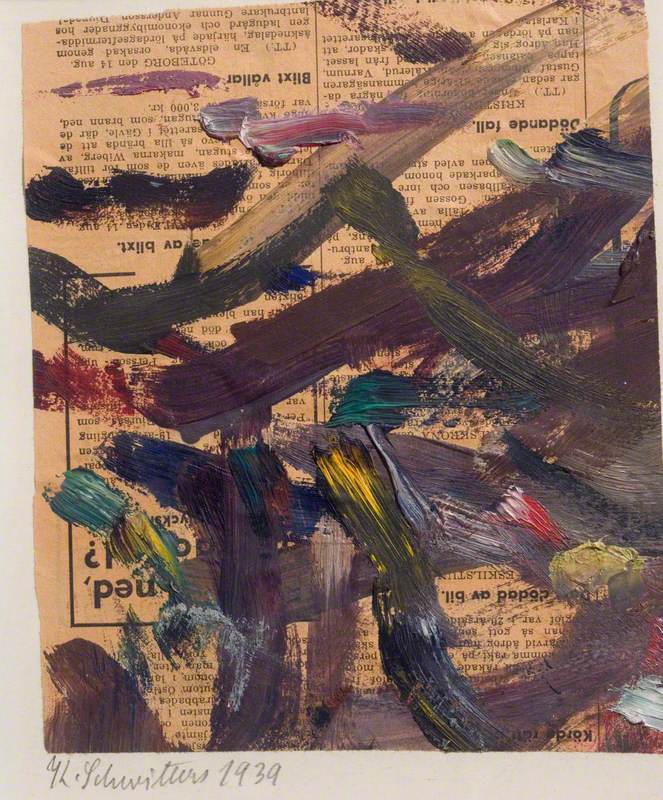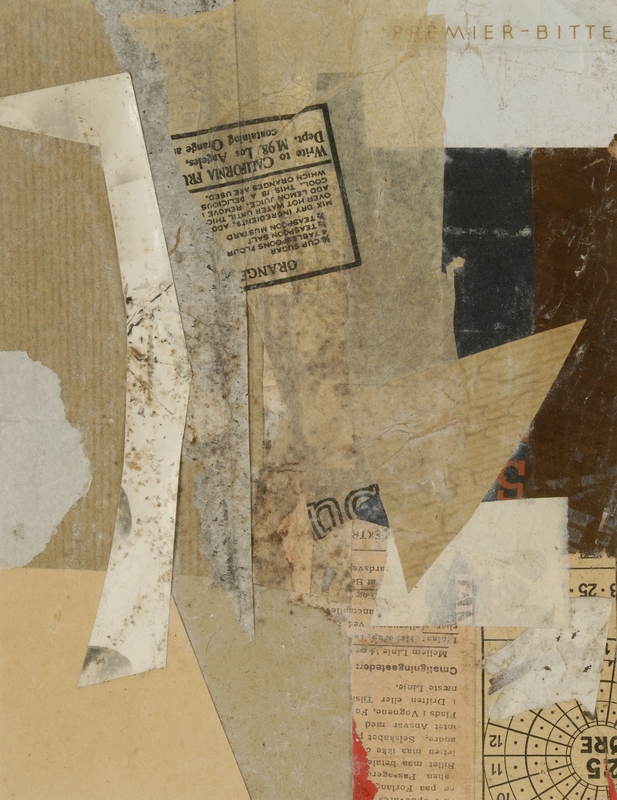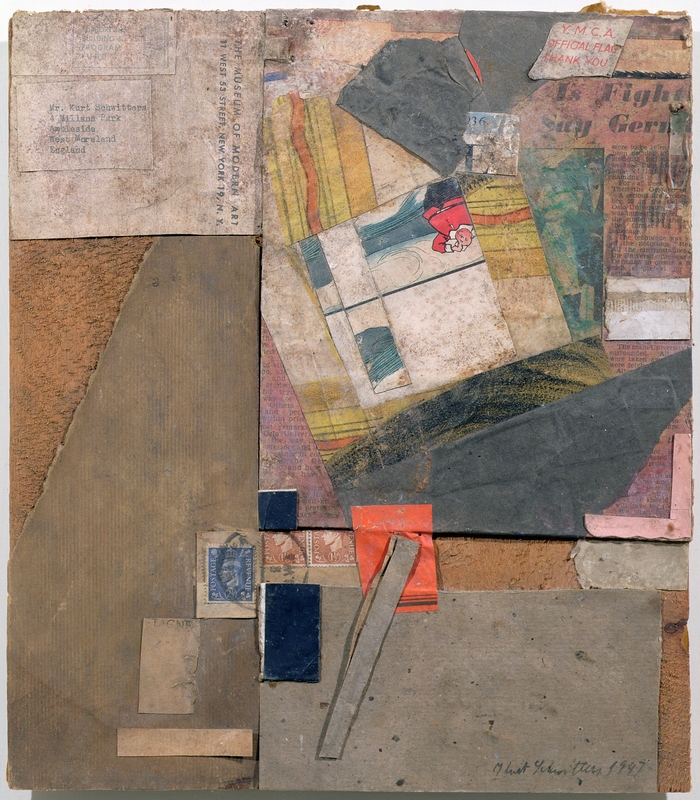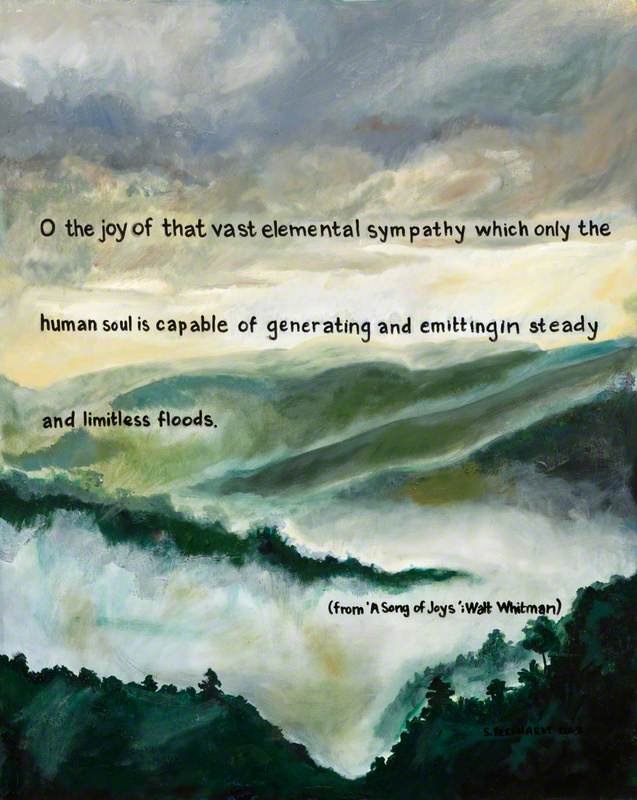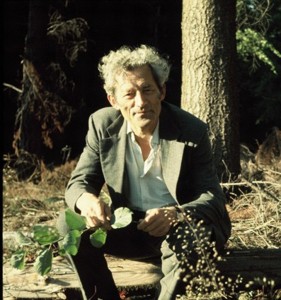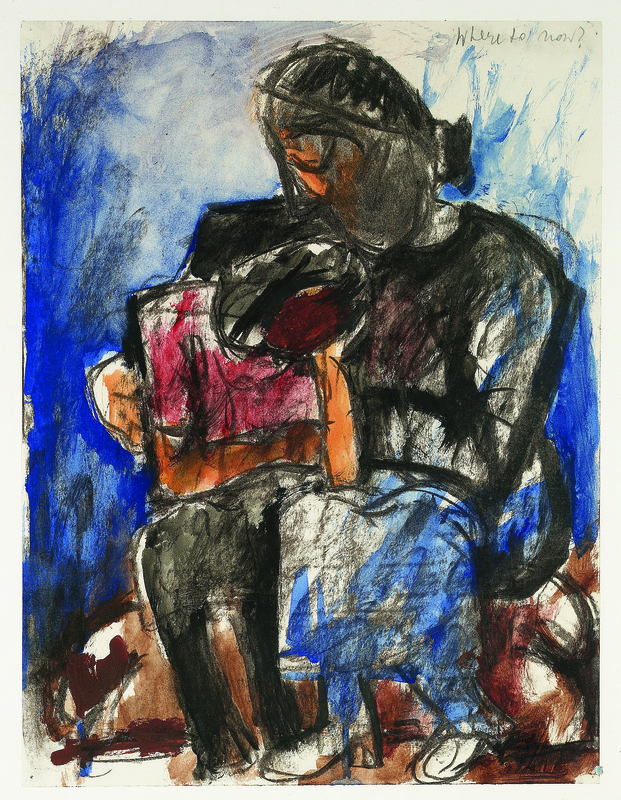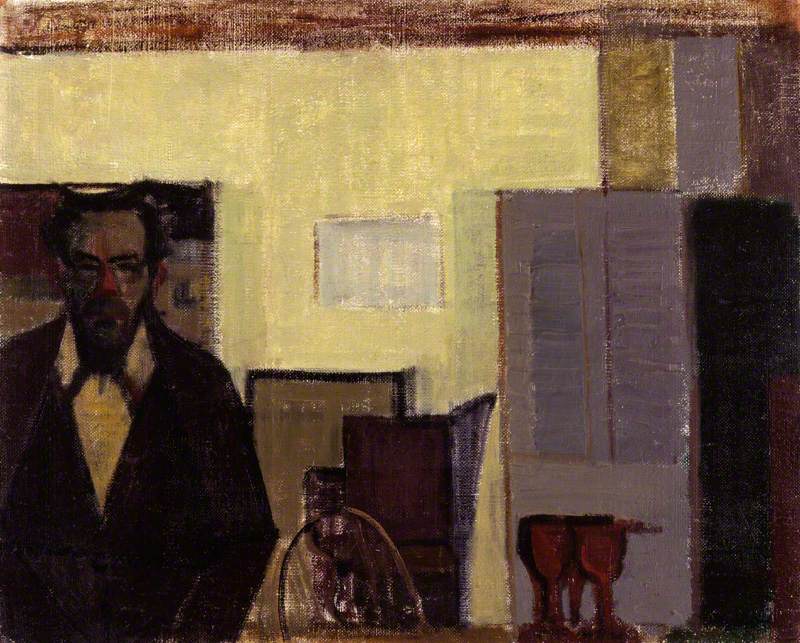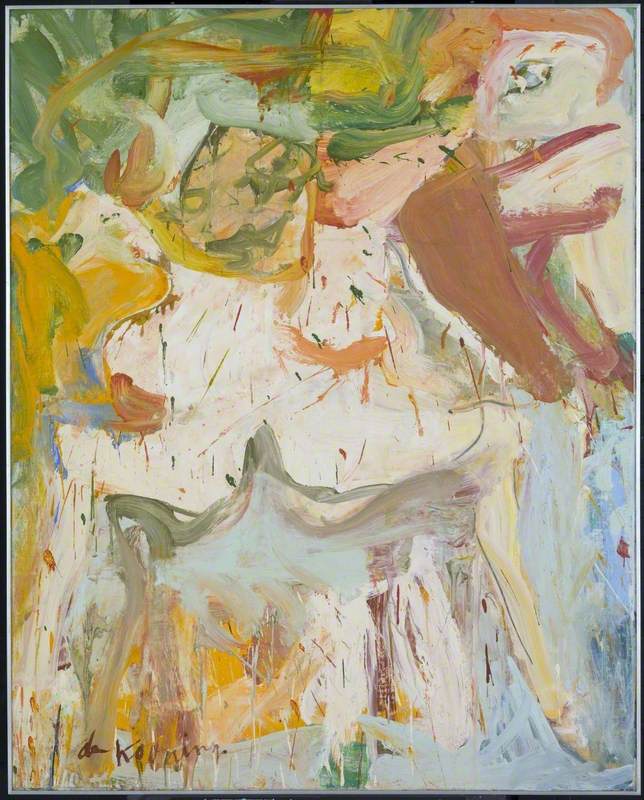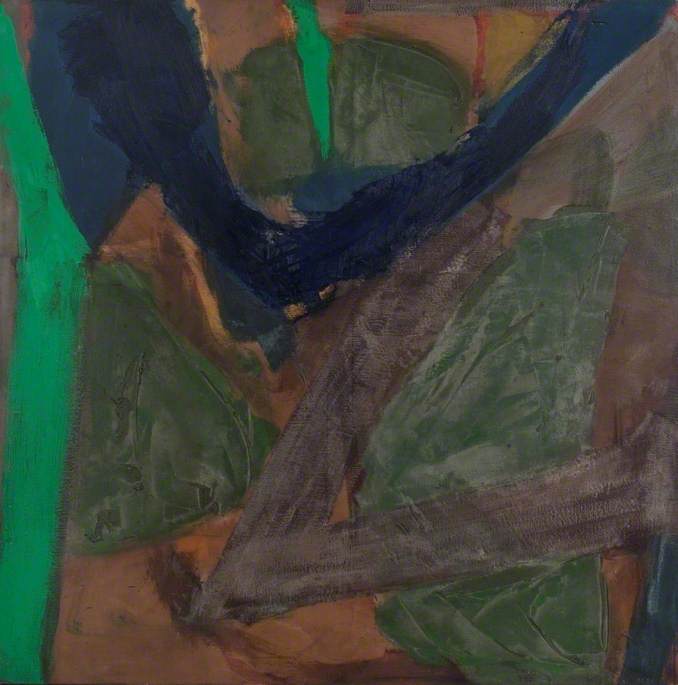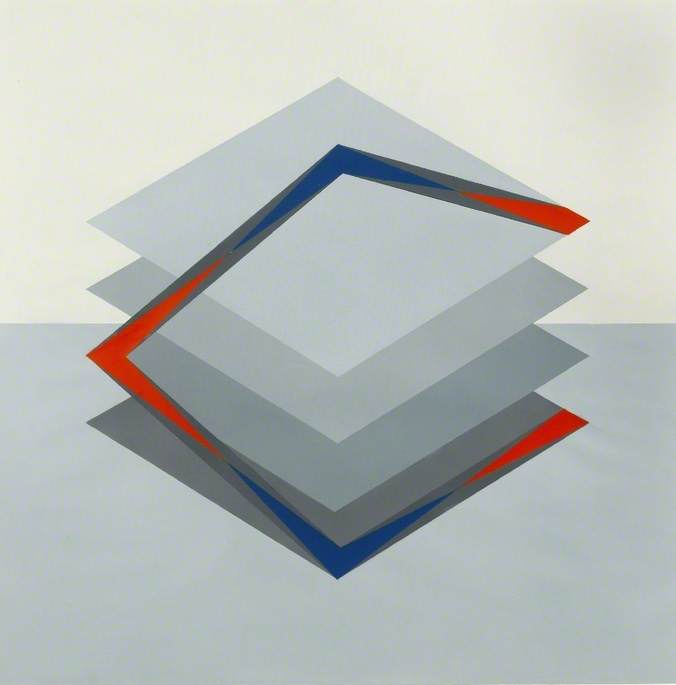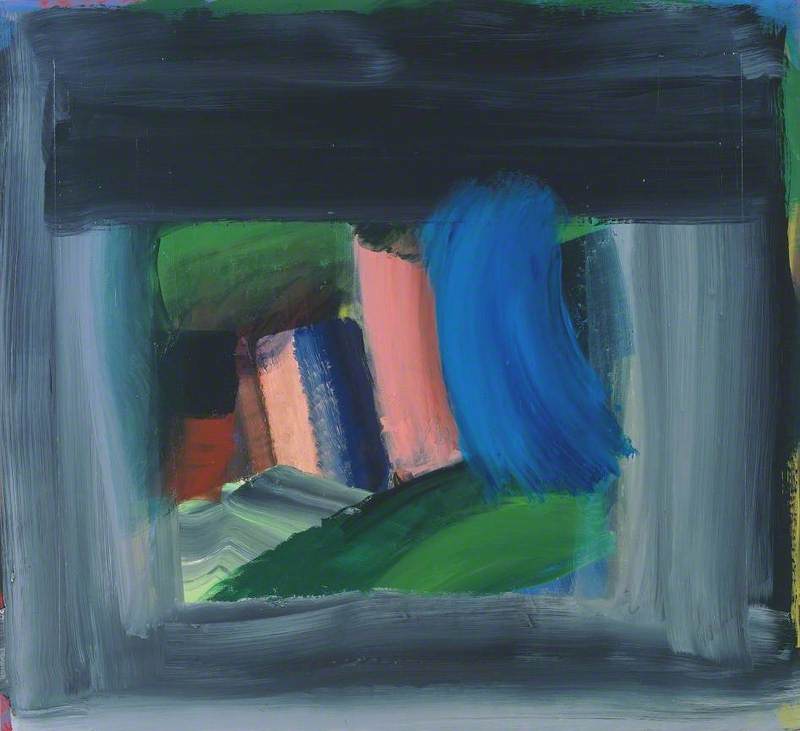'My name is Kurt Schwitters... I am a painter and I nail my pictures together.'
This is a very unusual artwork, which currently resides at the Armitt Museum in Ambleside, it is made from found pieces of wood, by an artist who was barely known in Britain at the time of his death in 1948, yet the artist Kurt Schwitters was to become one of the most influential artists of the twentieth century. But how did this painting, or is it an assemblage, get here and what is its significance?
Schwitters was associated with the avant-garde art movement Dada, created in Zurich in 1916, during the First World War. As the movement spread across Germany and to Paris, Schwitters responded with his enigmatic collages of found materials from the streets of Hanover where he lived; from tram tickets, parts of bicycles and detritus of modern life, creating artworks he called 'MERZ', after a splicing the word 'Commerz' in half for one of his collages.
His art was widely exhibited, collected and discussed in art circles, he created many performances, phonetic sound poems and readings from his published stories, much of this performed with a twinkle in his eye. They are funny, antagonistic and ridiculous, but deadly serious in intention. With the rise of Hitler and with modern artists deemed as degenerate, many artists, especially those belonging to Dada, looked for escape and self-imposed exile from Germany. Schwitters eventually left his beloved Hanover for Norway, a country where he had spent many happy holidays. Eventually as the long arm of the Reich reached into Scandinavia, Kurt with his son Ernst, boarded one of the last ships bound for Britain. He would never return to Germany and swore not to speak its language again.
For a while Schwitters established himself with other émigrés in London, until one day he was interned on the Isle of Man as an enemy alien. Eventually after release, he resided in the Lake District, a place that reminded him of those happier times in Norway. Through his travels Schwitters developed a broad repertoire of work, using his training at the Dresden Academy (with fellow students, the painters Otto Dix and George Grosz).
He was a very able draughtsman and experimenter of painting techniques, selling his paintings and portraits of locals, friends and landscapes of the surrounding area, at the Bridge House at Ambleside. He combined these techniques into his collages and assemblages. In Wood on Wood we see loose expressionist dabs of pigment like Monet or Seurat mingle on the hard surfaces of the found objects, in rich yellows, blues and red, perhaps fading a little now, but showing an advancement of the initial techniques established in Cubism by Picasso and Braque.
Looking back on his initial developments in Dada, after the First World War, Schwitters stated: 'In the war, things were in terrible turmoil. What we had learned at the academy was of no use to me and the useful new ideas were still unready. Everything had broken down and new things had to be made out of the fragments, and this is MERZ. It was like a revolution within me, not as it was, but as it should have been.'
This MERZ piece and the others in the collection at the Armitt Museum and also at Abott Hall Gallery in Kendal, are testament to the significance of his late works created in Britain. Wood on Wood brings the actual landscape, in which he loved to roam, into the actual painting with the piece of branch nailed to the centre and sticking out towards the viewer. Justifying his actions and extreme approach from earlier in his career, 'My name is Kurt Schwitters... I am a painter and I nail my pictures together.'
Is he bestowing on us his love for the land, where painting the landscape isn't enough, he must capture it and nail it down? Is he perhaps stating that this is now the land where he himself has become rooted? After the Second World War, Schwitters started on his last and final artwork, the Merz Barn, in addition to mastering collage and assemblage he had always been interested in the three dimensional space inhabited by the figure.
He started work on his first Merzbau in his home in Hanover in 1923; an installation space (before we knew it as an 'installation'), transforming six rooms into a modern cave of objects and wooden sculptured forms, an abstract environment for the modern man! It didn't survive the RAF bombing of Hanover and his house was destroyed. Through black and white photographs it has been reimagined and recreated at the Sprengel Museum in Hanover.
His second Merzbau in Norway, created while escaping the advancing German army was burned down in the 1950s by two boys playing with fire. After the Second World War the Museum of Modern Art gave Schwitters money to recreate his original Merzbau, and this he worked on tirelessly through his ill health in a barn on the Cylanders Farm, Langdale at Elterwater, using found objects, cement and painted forms emerging from the wall surface into the interior space. This turned out to be something quite different from his original Merzbau and remained unfinished by his death in 1948.
The last and only surviving Merz Barn wall now resides at the Hatton Gallery in Newcastle. Richard Hamilton moved it in the 1950s to repair and preserve it.
Kurt Schwitters' Merz Barn Wall, then and now.
— Hatton Gallery (@HattonGallery) November 16, 2021
The Merz Barn Wall, which was brought to Hatton Gallery in 1965 and incorporated into the fabric of the building, was an integral part of the Gallery's £3.8million development back in 2017. 1/3 pic.twitter.com/uGMjazGncZ
The remaining barn is now an international art centre with a rich artist residency programme and events that honour Schwitters and his legacy, overseen by the Littoral Trust. It has become a place of pilgrimage for artists and scholars the world over.
Is Wood on Wood a preparatory idea towards his final and lasting legacy of the Merz Barn? What makes this so unusual and yet compelling, is that we are seeing emerge at the end of Schwitters' life, artworks and approaches to art-making that are rich and bold in nature and would with time, inspire many artists in the second half of the twentieth century: artists such as the Abstract Expressionist Robert Motherwell, Robert Rauschenberg and Jasper Johns with their Neo-Dada explorations where the focus on the object becomes a primary concern for the artists. Would there be Joseph Cornell's museum-like boxes? And most importantly Richard Hamilton's use of collage shows a strong influence of Schwitters in the 1950s and in his first Pop Art collage paintings exhibited in 1956 at the Whitechapel Gallery.
In addition, we saw the use of Dada techniques of collage, assemblage and performance art, mastered by Schwitters, become a major part of art students repertoire in the 1960s and this legacy is still evident today, especially in Damien Hirst, who has stated Schwitters as a significant influence on his early work. But who noticed this émigré on the bridge at Ambleside, the modern artist Kurt Schwitters, who nailed his pictures together, selling his landscape paintings to survive?
Yet it was his own belief that it would be another 60 years before he is truly understood: 'I know for sure that a great day will come for myself and for other important individuals of the abstract movement when we shall influence a whole generation, only I fear that I personally will not live to see the day!'
David Moxon, artist, art historian and co-founder of Artbar, a monthly programme of artists talks in Bath
